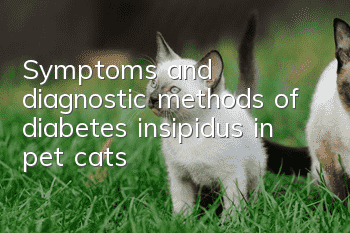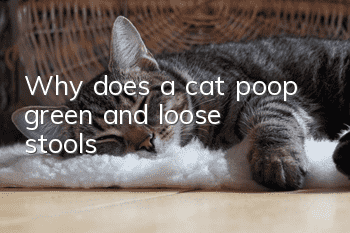Symptoms and diagnostic methods of diabetes insipidus in pet cats

What are the causes of diabetes insipidus
Diabetes insipidus is a common disease of dogs and cats. Kidney problems are one of the causes of the disease, and the disease is mostly caused by congenital factors, so it is sometimes difficult to avoid the occurrence of the disease. Breeders All you can do is pay more attention and pay more attention to the cat’s condition.
1. Vasopressin diabetes insipidus
Chronic diabetes insipidus may be caused by a complete or partial disorder in the combination or release of vasopressin. In addition, nephrogenic diabetes insipidus may also be caused by a complete or certain disorder in the renal tubular response to vasopressin.
2. Congenital and acquired characteristics
Whether it is chronic diabetes insipidus or nephrogenic diabetes insipidus, it can occur congenitally or develop later in life. Tumors or brain injuries may lead to chronic diabetes insipidus; generally speaking, diabetes insipidus is mostly caused by congenital causes, but it is rare that diabetes insipidus is caused by inflammation or parasites.
3. Insufficient pituitary gland
Antidiuretic hormone is secreted by the pituitary gland, which can increase the absorption of water by the kidneys. However, if the pituitary gland itself does not secrete enough water, or there are abnormalities in the kidneys, causing the antidiuretic hormone to be unable to work, cats may drink. Polyuria, excessive urination, easy thirst, and excretion of large amounts of light-colored urine.
What are the symptoms of diabetes insipidus
Renal lesions may lead to diabetes insipidus in cats, and most of the disease is congenital, but there are also a few acquired conditions that can cause the disease. This disease is caused by a vasopressin deficiency, showing severe uncontrolled polyuria, accompanied by polydipsia, so the owner may need to clean up more when the disease occurs.
1. If a cat has diabetes insipidus, it will have excessive urination, excessive water excretion, urinary incontinence or poor appetite, etc. When the disease is severe, it will lead to dehydration and weakness. If there is insufficient drinking water supply , causing dehydration greater than 10%, which can lead to death.
2. Polyuria: Generally speaking, the most obvious condition is increased urination, often urinary incontinence or enuresis, or severe signs of irritability and thirst. Cats with diabetes insipidus will constantly seek water and may experience loss of appetite and weight.
How to diagnose and treat diabetes insipidus
Cats suffering from diabetes insipidus usually have symptoms such as polyuria, urinary incontinence, and poor appetite. In severe cases, it can cause massive dehydration and threaten the cat's life. It can be seen that if measures against this disease are not taken in time, the death of the cat is likely to occur. Therefore, when owners find that their cats have corresponding symptoms, they should send them to the hospital for examination and treatment in time.
1. Distinguish thirst conditions
To determine whether a cat has diabetes insipidus, it is important to distinguish whether the polydipsia is caused by the body or caused by diabetes insipidus.Caused by polydipsia. If it is primary polydipsia, excessive drinking will lead to lower vasopressin secretion.
2. The healing conditions are different
Cats with disseminated hypothalamic or pituitary tumors, especially those with neurological signs, may not be completely cured. The healing process of original trauma to the brain varies. Some will recover after a period of time, while others will cause permanent damage.
- How to treat jaundice in cats
- Cat's hair is mixed with white dander
- What should I do if my cat gets angry?
- Can cats eat kiwi fruit?
- What are the causes of autism in cats?
- How to raise British shorthair cats?
- What foods can’t cats eat? 10 foods that cats can’t eat
- Can cats eat mangosteen?
- What toys do cats like?
- It’s important to know how to raise cats at home. When selecting breeds, focus on personality.



